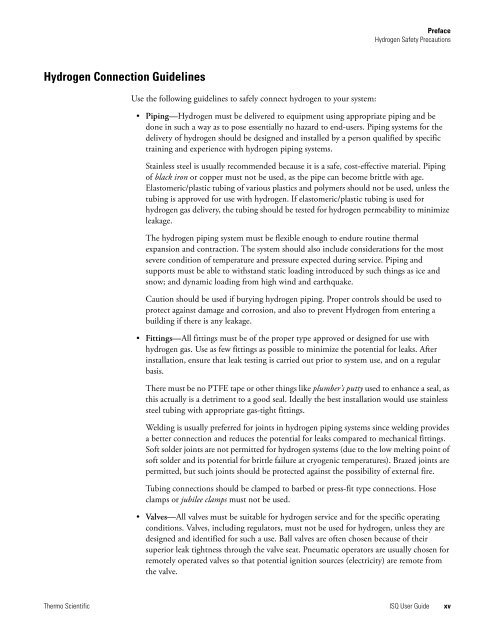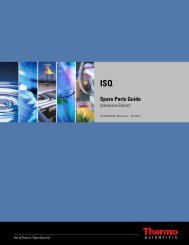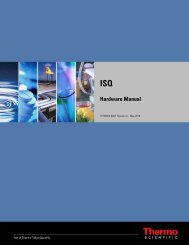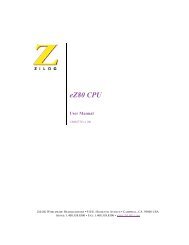ISQ User Guide - Write Frame of Mind
ISQ User Guide - Write Frame of Mind
ISQ User Guide - Write Frame of Mind
You also want an ePaper? Increase the reach of your titles
YUMPU automatically turns print PDFs into web optimized ePapers that Google loves.
Hydrogen Connection <strong>Guide</strong>lines<br />
Use the following guidelines to safely connect hydrogen to your system:<br />
Preface<br />
Hydrogen Safety Precautions<br />
• Piping—Hydrogen must be delivered to equipment using appropriate piping and be<br />
done in such a way as to pose essentially no hazard to end-users. Piping systems for the<br />
delivery <strong>of</strong> hydrogen should be designed and installed by a person qualified by specific<br />
training and experience with hydrogen piping systems.<br />
Stainless steel is usually recommended because it is a safe, cost-effective material. Piping<br />
<strong>of</strong> black iron or copper must not be used, as the pipe can become brittle with age.<br />
Elastomeric/plastic tubing <strong>of</strong> various plastics and polymers should not be used, unless the<br />
tubing is approved for use with hydrogen. If elastomeric/plastic tubing is used for<br />
hydrogen gas delivery, the tubing should be tested for hydrogen permeability to minimize<br />
leakage.<br />
The hydrogen piping system must be flexible enough to endure routine thermal<br />
expansion and contraction. The system should also include considerations for the most<br />
severe condition <strong>of</strong> temperature and pressure expected during service. Piping and<br />
supports must be able to withstand static loading introduced by such things as ice and<br />
snow; and dynamic loading from high wind and earthquake.<br />
Caution should be used if burying hydrogen piping. Proper controls should be used to<br />
protect against damage and corrosion, and also to prevent Hydrogen from entering a<br />
building if there is any leakage.<br />
• Fittings—All fittings must be <strong>of</strong> the proper type approved or designed for use with<br />
hydrogen gas. Use as few fittings as possible to minimize the potential for leaks. After<br />
installation, ensure that leak testing is carried out prior to system use, and on a regular<br />
basis.<br />
There must be no PTFE tape or other things like plumber's putty used to enhance a seal, as<br />
this actually is a detriment to a good seal. Ideally the best installation would use stainless<br />
steel tubing with appropriate gas-tight fittings.<br />
Welding is usually preferred for joints in hydrogen piping systems since welding provides<br />
a better connection and reduces the potential for leaks compared to mechanical fittings.<br />
S<strong>of</strong>t solder joints are not permitted for hydrogen systems (due to the low melting point <strong>of</strong><br />
s<strong>of</strong>t solder and its potential for brittle failure at cryogenic temperatures). Brazed joints are<br />
permitted, but such joints should be protected against the possibility <strong>of</strong> external fire.<br />
Tubing connections should be clamped to barbed or press-fit type connections. Hose<br />
clamps or jubilee clamps must not be used.<br />
• Valves—All valves must be suitable for hydrogen service and for the specific operating<br />
conditions. Valves, including regulators, must not be used for hydrogen, unless they are<br />
designed and identified for such a use. Ball valves are <strong>of</strong>ten chosen because <strong>of</strong> their<br />
superior leak tightness through the valve seat. Pneumatic operators are usually chosen for<br />
remotely operated valves so that potential ignition sources (electricity) are remote from<br />
the valve.<br />
Thermo Scientific <strong>ISQ</strong> <strong>User</strong> <strong>Guide</strong> xv






